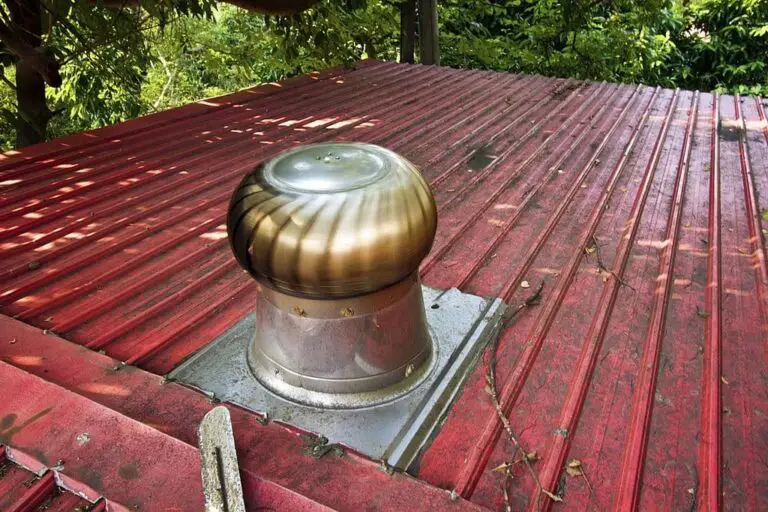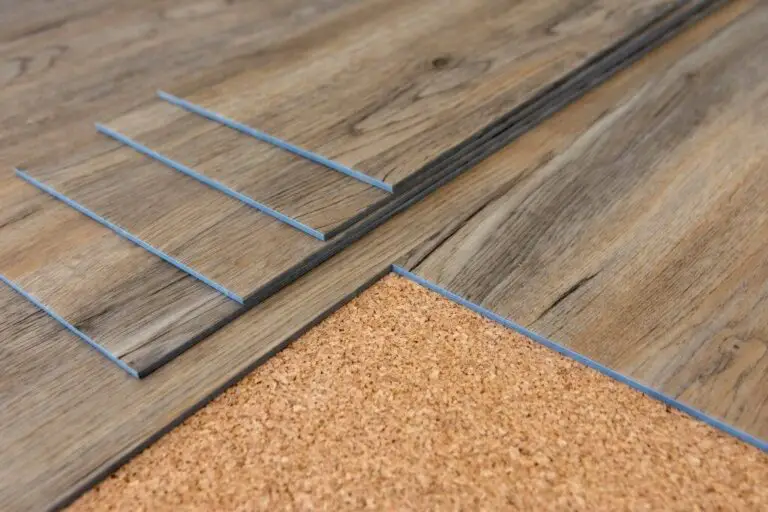65+ Simple And Inexpensive Diy Fence Ideas For Your Backyard, Or Privacy
There are numerous reasons why a fence is an essential addition to any property. Whether you’re concerned about unwanted critters invading your yard or simply want to define your outdoor space, a fence can serve as a reliable barrier. Moreover, it can also be used to create separate areas within your garden for specific plants or vegetables, adding a touch of organization and aesthetics to your landscaping.
In addition to its functional benefits, a fence can play a crucial role in maintaining privacy and property boundaries. It can be designed to complement the overall aesthetic of your home and yard, making it an integral part of your outdoor design. In this article, we’ll delve into some DIY-friendly fence ideas that can help you create a unique and eye-catching boundary for your property.
What is a fence?
The primary function of a fence lies in its ability to ensure safety within the confines of a house. By enclosing people, pets, and other animals within its perimeter, a fence provides a secure environment, shielding them from potential threats. Beyond its protective role, a fence also plays a crucial part in defining property boundaries. One of its distinct advantages is that it can be erected without requiring a solid foundation, unlike walls which demand substantial groundwork.
Additionally, you have the flexibility to utilize affordable and eco-friendly materials, such as recycled items, when constructing your fence.
What does a purple fence mean?
Having a purple fence may seem like a trivial matter at first glance, but it’s actually a significant indicator of property boundaries. A little-known fact is that there’s a law called the Purple Fence Law, which specifies that properties with purple fences or streaked trees signify ‘no trespassing’. This regulation originated in Arkansas in 1987 as a way to clearly mark private and public property lines. Before long, other states across the US followed suit.
Today, the purple paint law remains in effect in jurisdictions such as Chicago, Missouri, Kansas, Florida, Maine, and North Carolina. Interestingly, some states like Idaho, Arizona, and Montana have adopted orange paints instead of purple for the same purpose.
What are the different kinds of fences?
In the realm of fencing, there exist two fundamental categories: live fences and static fences. Live fences are characterized by their natural composition, comprising plants such as ferns, shrubs, and kei apple, among others. These organic barriers serve as a testament to the versatility of vegetation in providing structural integrity. On the other hand, static fences are man-made constructions that utilize a wide range of materials, including chain link, barbed wire, vinyl, and many more.
This dichotomy highlights the diverse possibilities for fencing, with each category offering unique advantages and applications.
What is the strongest type of fence?
Wrought iron fencing has earned a reputation as the most resilient type of fence. Its remarkable durability stems from its non-malleable nature, allowing it to withstand even the most extreme climate conditions for many years. This attribute makes it an excellent investment for large properties, where a strong and long-lasting barrier is crucial. Beyond its durability, wrought iron fencing also boasts natural pest resistance, further solidifying its value as a dependable security solution.
Its unique design features point-ended elements that render attempts at burglary or sneaking pets virtually futile.
What is the easiest fence to install?
When it comes to installing fences, some types are easier to put up than others. Two of the most straightforward options are aluminum fences and no-dig steel fence panels. Aluminum fences stand out for their simplicity – they don’t require the same level of preparation as materials like wood, vinyl, or wrought iron. You won’t need to worry about nailing, shaping, or welding them in place. No-dig steel fence panels take this ease a step further.
As their name suggests, you won’t have to dig holes or prepare the ground before installation. Instead, simply stick the pre-made panels into the soil and your fence system is up and running in no time.
What is the best material for fencing?
When it comes to fencing options, wooden, metal, and steel fences are timeless choices. However, vinyl has emerged as the top material for fencing due to its impressive performance over the years. Its unparalleled durability, coupled with pest and rust resistance, makes it an ideal choice for extreme weather conditions. Moreover, vinyl fencing is remarkably low maintenance, requiring only occasional cleaning with basic materials.
Additionally, it comes in a range of finishes, from wood-like appearances to industrial designs, providing homeowners with a versatile option that meets their needs and often exceeds expectations.
What fence material lasts the longest?
While various fence materials can boast impressive lifespans, three stand out for their remarkable durability: wrought-iron, cedar wood, and vinyl. With average lifespans ranging from 15 to 20 years, these materials demonstrate an impressive capacity to withstand the test of time. However, it’s worth noting that vinyl fencing holds a unique advantage in terms of maintenance – its low upkeep requirements have made it a clear favorite among homeowners seeking hassle-free solutions.
As a result, vinyl has emerged as the most sought-after choice for many.
How much does a backyard fence cost?
According to the 2020 house fencing calculator, the estimated cost of fences per foot ranges from $15 to $30. This translates to an average expenditure of $1,600 to $3,500 for a complete privacy fence, regardless of the material used. Furthermore, if you choose to install it yourself without professional labor, you’ll still need to budget at least $2,700, with approximately 75% of that amount going towards materials alone.
How far apart should fence posts be?
The ideal spacing between fence posts depends on the type of material used for fencing. For wooden or vinyl fences, a consistent distance of 6-8 feet is crucial to ensure a stable foundation. Going beyond this range can compromise the overall structure and lead to unwanted consequences. In contrast, other materials typically require a slightly longer post-to-post spacing, ranging from 8-10 feet.
Understanding these fundamental guidelines is essential for any DIY fence builder looking to achieve professional-grade results.
What is the best color to paint a fence?
While it’s tempting to get creative with bold color choices for your fence, it’s essential to consider the overall aesthetic impact on your property. Factors like the house design, land area, and surrounding environment all play a role in determining what colors will work well together. To ensure a harmonious look, it’s best to start by selecting neutral options like white, gray, or black, which are universally flattering and won’t overpower the surrounding landscape.
If you do want to add some personality with accent colors, blue, yellow, and beige can be great choices that still maintain a sense of balance. By considering these factors and making informed color selections, you’ll be able to create a beautiful and inviting outdoor space.
Cheap fence ideas for backyard
For those on a limited budget, there’s no need to sacrifice the security of your property. The materials required will depend on the size of the area you’re looking to fence. A cost-effective option is to install a rail horse fence around your backyard, which requires planks of wood, nails, and a hammer. This type of fencing is particularly well-suited for rural homes where there’s ample space to accommodate livestock. Another budget-friendly alternative is chain link fencing.
At approximately $4 per foot, the cost of chain link adds up to about $10 per post. Depending on your yardage needs, the total cost can be as low as $250.
Fence designs for front yards
When it comes to front yards, faces from time to time are a common sight, often dictated by local regulations or city ordinances. However, if you’re not bound by such rules, there are numerous ways to fence your front yard. For instance, vinyl fences make excellent barriers for young children and pets, while solid vinyl models equipped with gates can provide increased privacy and restricted access.
Another option is ornamental fencing, which can feature various designs and serve as an attractive decoration for the front yard. Picket fences, too, are a good choice – not only do they add style to the area, but they’re also relatively affordable to install. To further enhance their appearance, you can cut the wood into any design you prefer and pair it with flowers along the edges.
Privacy fence ideas
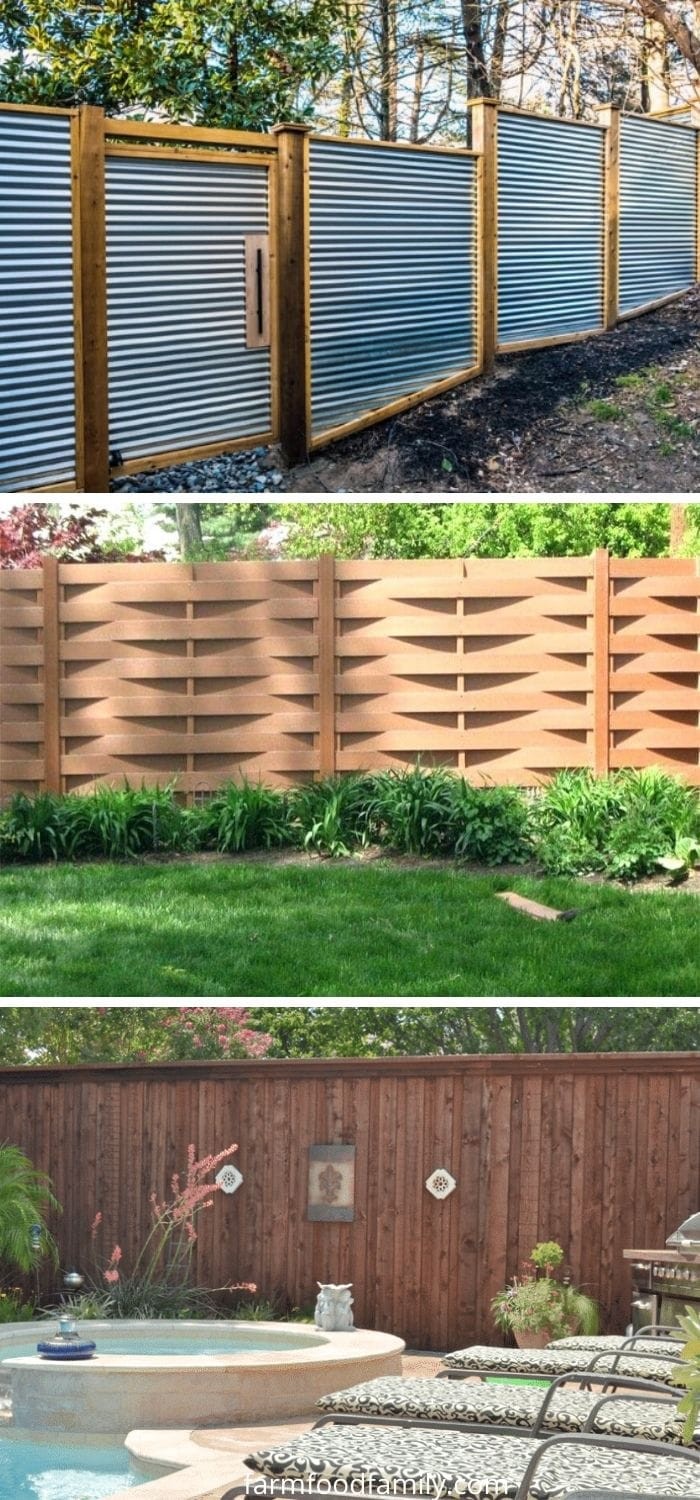
To effectively conceal your home and its surroundings from public view, a privacy fence is the ideal solution. This type of structure provides unparalleled security and helps prevent early morning disturbances caused by stray passersby triggering your dogs to bark. When implemented correctly, a privacy fence can create a sense of seclusion, shielding your property from unwanted attention. For homeowners seeking to maximize their fence’s functionality, consider these design ideas:
What is the best type of privacy fence?
Live fences offer a cost-effective way to maintain privacy in your outdoor space. The densely growing trees or shrubs create an impenetrable barrier, blocking any view of the property from outside. Additionally, their natural beauty can be enhanced through trimming and shaping, allowing you to create intricate designs that complement your yard’s aesthetic. For a more permanent solution, brick walls provide a sturdy and secure option for achieving privacy.
With the flexibility to construct them at your desired height, you can also incorporate features like surveillance systems or other security measures to ensure complete seclusion.
How do you put privacy on a fence?
To prioritize privacy around your property, consider incorporating cameras, razor wire, or motion detectors into your fencing strategy. Alternatively, you could opt for more unconventional yet effective solutions such as installing electric wire or embedding glass shards into the fence. These innovative approaches not only boost security but also contribute to a heightened sense of seclusion.
Garden fence ideas
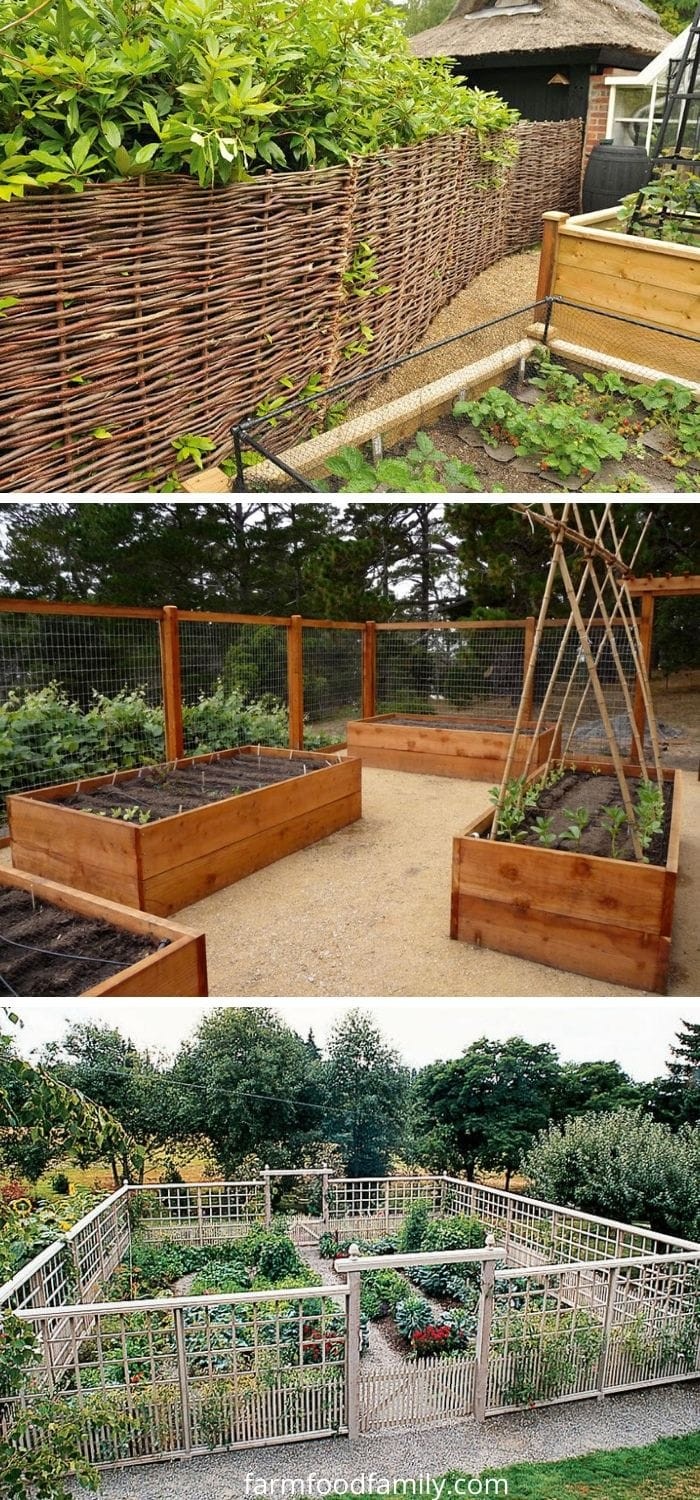
Garden fences serve multiple purposes in horticulture. They can enclose patio spaces or protect plants and vegetables from unwanted tampering, allowing them to grow undisturbed. The presence of a fence can elevate the aesthetic appeal of a garden, imparting an air of sophistication and organization.
In fact, a well-designed fence can transport one’s imagination to a picturesque scene straight out of a magazine, complete with earthy and vibrant green tones reminiscent of the iconic publications like Sunset and Real Homes.
Wood fence ideas
While wood has remained an enduringly beautiful material option over time, particularly when used for fences, it’s essential to consider repurposing leftover woods as well. Investing in high-quality, more expensive wood may prove a worthwhile decision, offering a classic and rustic charm that never goes out of style. This timeless combination makes wood fencing a consistently reliable choice.
Dog fence ideas
Dogs can be bursting with energy and curiosity, sometimes even causing chaos by chasing after other pets in the yard. To prevent this from becoming a nuisance, having a reliable barrier in place is essential. One effective solution is a dog fence, which not only keeps your pet contained but also adds a touch of aesthetic appeal to your outdoor space. For instance, consider installing an invisible dog fence for a seamless and low-maintenance option.
The type of dog you have will ultimately determine the suitability of a particular fence. Palette fences are an excellent choice for containing smaller breeds, while metal fences might be more suitable for larger dogs that require extra support and durability. Make sure to install your fence at a sufficient height to prevent your dog from jumping over it.
Bamboo fence

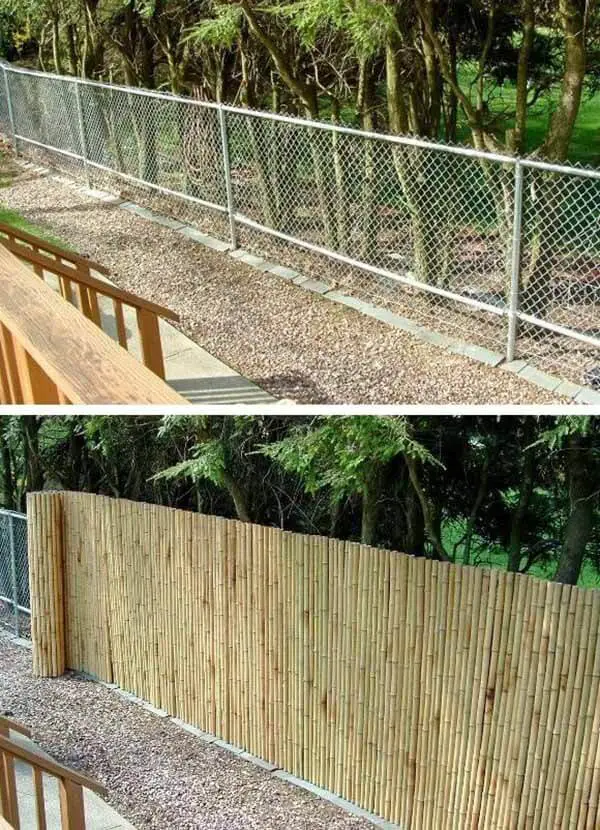
While bamboo fences may seem like an unconventional choice for outdoor boundaries, they offer a unique blend of organic charm and versatility. Not only are they affordable and easy to install, but their natural beauty can also be easily complemented by subtle enhancements. With some careful planning and installation, the rustic aesthetic of bamboo fencing can be balanced with industrial or modern accents, such as concrete bases or metal highlights.
This flexibility makes it an attractive option for those looking to add a touch of oriental flair to their outdoor spaces.
Metal fencing
Metal fencing’s aesthetic appeal lies in its versatility, defying expectations with a modern charm that can also evoke classic, Hispanic villa-inspired styles with careful design choices. This adaptability makes metal fencing an equally worthy option compared to other materials. Consider the various designs available, and you’ll discover that metal fencing’s range is truly unparalleled.
PVC fencing
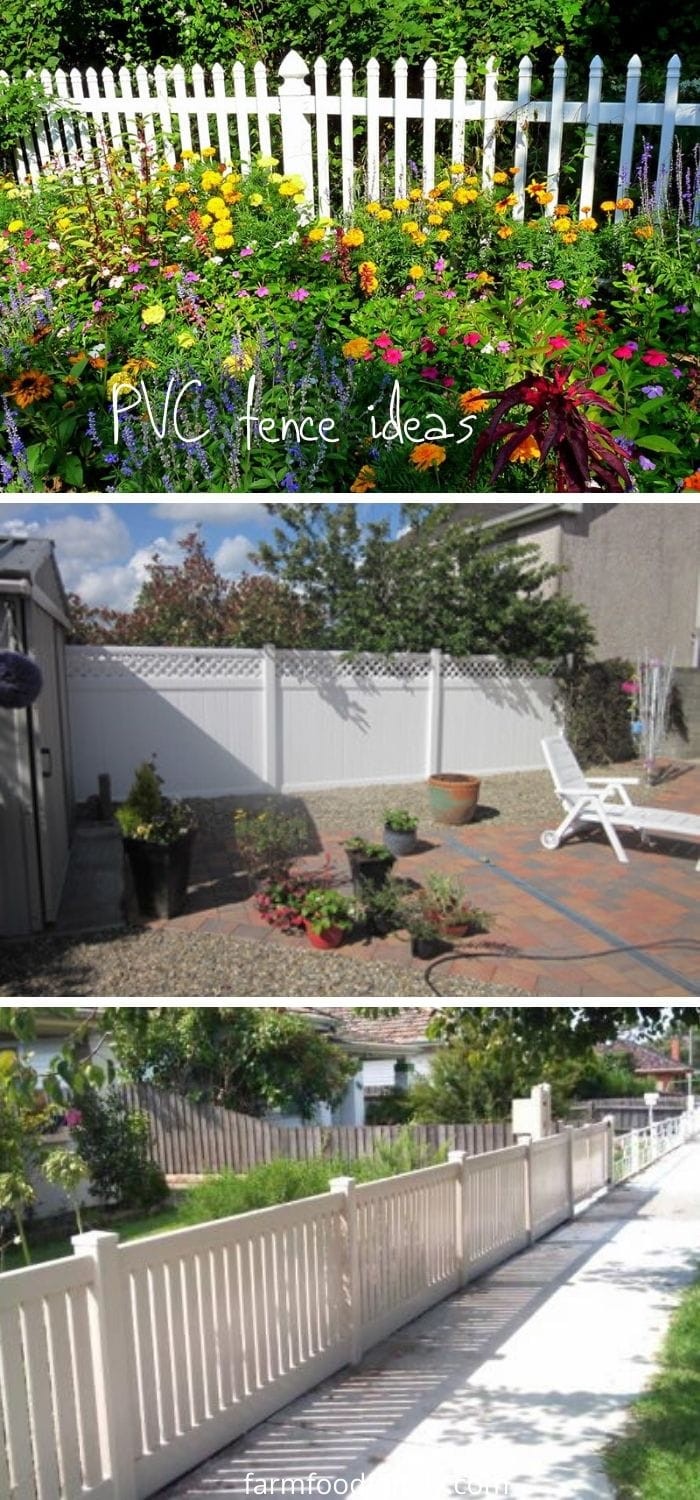
While it’s common to conflate PVC and vinyl, it’s not hard to see why – after all, PVC is the primary component used in manufacturing vinyl fence panels. However, despite their similarities, each material has its own unique characteristics.
PVC, for instance, boasts a remarkable lifespan and is often installed at a relatively low cost.
What’s more, when it comes to aesthetics, PVC can convincingly mimic the look of wood, complete with a charming white hue that evokes a cozy cottage feel – as seen in many examples.
Aluminum fencing
One of the most sought-after fencing options, aluminum fencing has gained popularity due to its affordability and low-maintenance characteristics. Its widespread use can be seen in various settings, including vineyards, modern homes, pool enclosures, dog runs, and garden boundaries. For those considering aluminum fencing as a viable option, here are some ideas to consider.
Electric fence ideas
Fencing systems designed for pasture management serve a multifaceted purpose. They help regulate grazing patterns among livestock, preventing overgrazing in certain areas while allowing other sections to recover. Additionally, these fences deter unwanted critters from stealing food intended for your animals or causing damage to your property’s landscape.
By controlling access and limiting trespassing, you can maintain a well-managed pasture that benefits both your farm and the surrounding environment.
Backyard fence ideas
A well-designed backyard fence serves a dual purpose – it not only maintains the privacy of family gatherings but also safeguards your outdoor space from unwanted animal intrusions. With the right aesthetic approach, your backyard fence can be transformed into a stunning focal point that complements your yard’s overall beauty, much like the inspiring examples showcased by kdlandscapeinc.
Front yard fence ideas
When it comes to front yard fences, there’s no one-size-fits-all solution. Instead, homeowners can opt for a wide range of designs and materials to suit their unique style and preferences. For instance, fences can be tall and private, offering complete seclusion from the rest of the world, or low and revealing, showcasing the beautiful garden or landscape beyond.
Conversely, some homeowners may prefer a fence that’s a perfect blend of both – giving them a sense of security while still allowing natural light to filter in. The material used for the fence can also vary greatly, with options ranging from traditional wood to modern aluminum, PVC, vinyl, and metal. Some fences might even feature a combination of two materials for added visual interest.
Furthermore, the design of the fence itself can be just as diverse, with choices including classic picket-style fences or more rustic pallet-inspired designs. With so many possibilities, it’s no wonder that front yard fences have become an art form in their own right.
Pool fence ideas
Pool fences serve a dual purpose: ensuring young children remain safe by preventing them from accessing the pool without proper adult supervision, while also creating an independent oasis around the pool, distinct from the surrounding garden and patio. This design approach offers a refreshing change from the common continuous garden-pool-patio layout. To further elaborate on this concept, consider the following ideas:
Decorative fence ideas
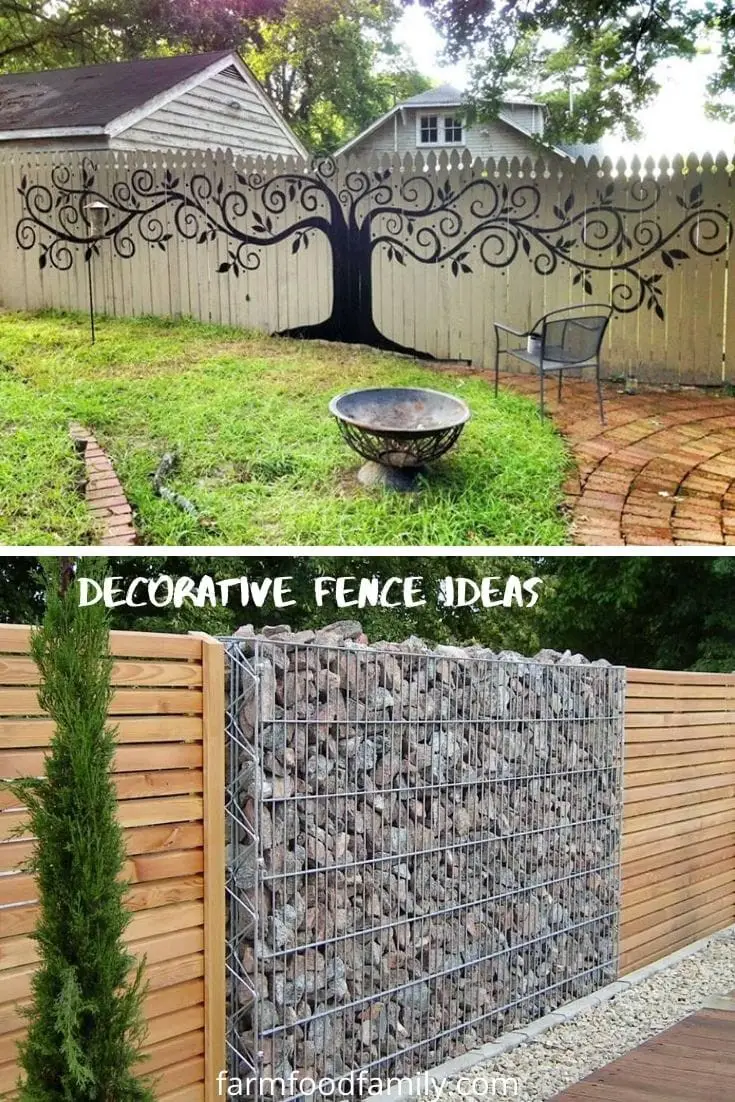
When it comes to decorative fencing, think outside the box! It’s all about creating something truly extraordinary. One way to achieve this is by incorporating custom designs that will make your fence stand out from the rest. Whether you’re looking for a unique statement piece or a cohesive design that complements your home’s architecture, customized designs can help you create an astonishing fence that reflects your personal style.
Pallet fence ideas
The innovative fence concept I’m about to share with you is perfect for rustic settings such as barns or farms, but its versatility also makes it an excellent choice for modern backyards, decks, and even vegetable gardens. Its primary function is to protect your plants from critters that might otherwise damage them. Take a look at these unique designs and see how they can enhance the overall aesthetic of your outdoor space.
Horizontal fence ideas

As architectural styles continue to evolve, so too do our choices for fencing materials. What was once a straightforward decision between wood or vinyl has given way to innovative combinations like wood-metal and vinyl-steel. This fusion of modern technology and traditional materials allows for an unprecedented level of design flexibility.
For instance, horizontal fences can now be crafted with equal parts aesthetic appeal and structural integrity, offering homeowners a fresh array of creative possibilities.
Lattice fence ideas
A versatile type of fencing that serves both functional and aesthetic purposes, the lattice design boasts a distinctive diagonal, crisscross pattern. Its applications range from providing privacy to creating decorative boundaries. This style is often spotted in patio gardens, as yard enclosures, and garden walls, where it can add visual appeal and define spaces with elegance.
When it comes to ideas for incorporating lattice fencing into your outdoor space, here are a few possibilities to consider.
Cedar fence ideas
The allure of traditional cedar fences often evokes images of classic Southern architecture, with its weathered charm and rustic elegance reminiscent of colonial-era homes. Notably, well-crafted cedar fences can boast an impressive lifespan of up to three decades, making them a timeless choice for those seeking durability and sophistication.
Picket fence ideas

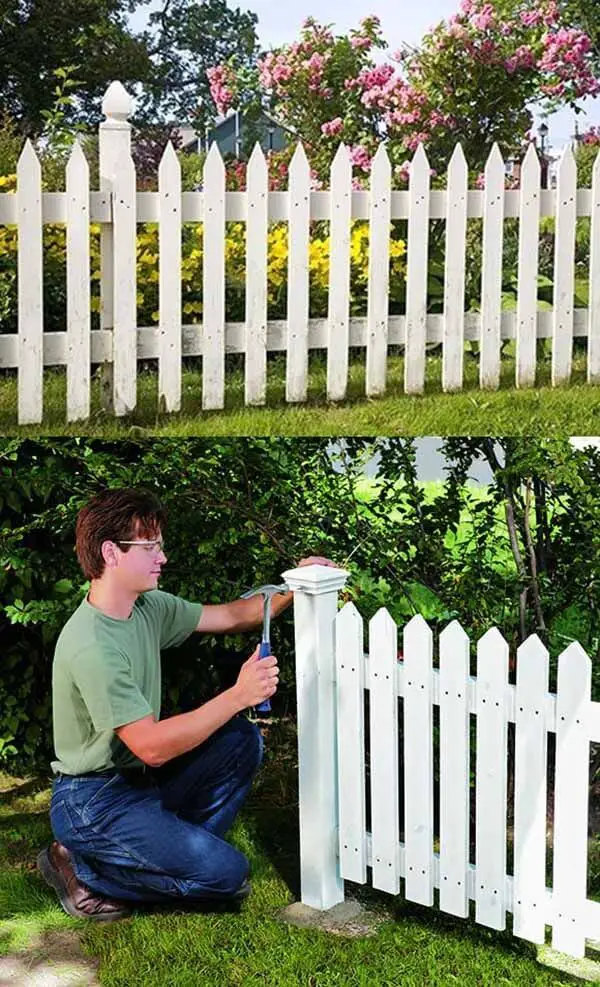
To create a cozy atmosphere reminiscent of rural homes, consider installing picket fences. Their distinctive pointed tops and low-lying design will transport you to a serene countryside setting. Not only are they visually appealing when painted white, but also relatively simple to construct.
Vegetable garden fence ideas
Protecting your prized crops from harm requires careful consideration. One effective method to safeguard their well-being is installing a sturdy fence around the perimeter, similar to those pictured here. This physical barrier prevents potential threats from compromising the health and integrity of your valuable harvest.
Rustic fence ideas
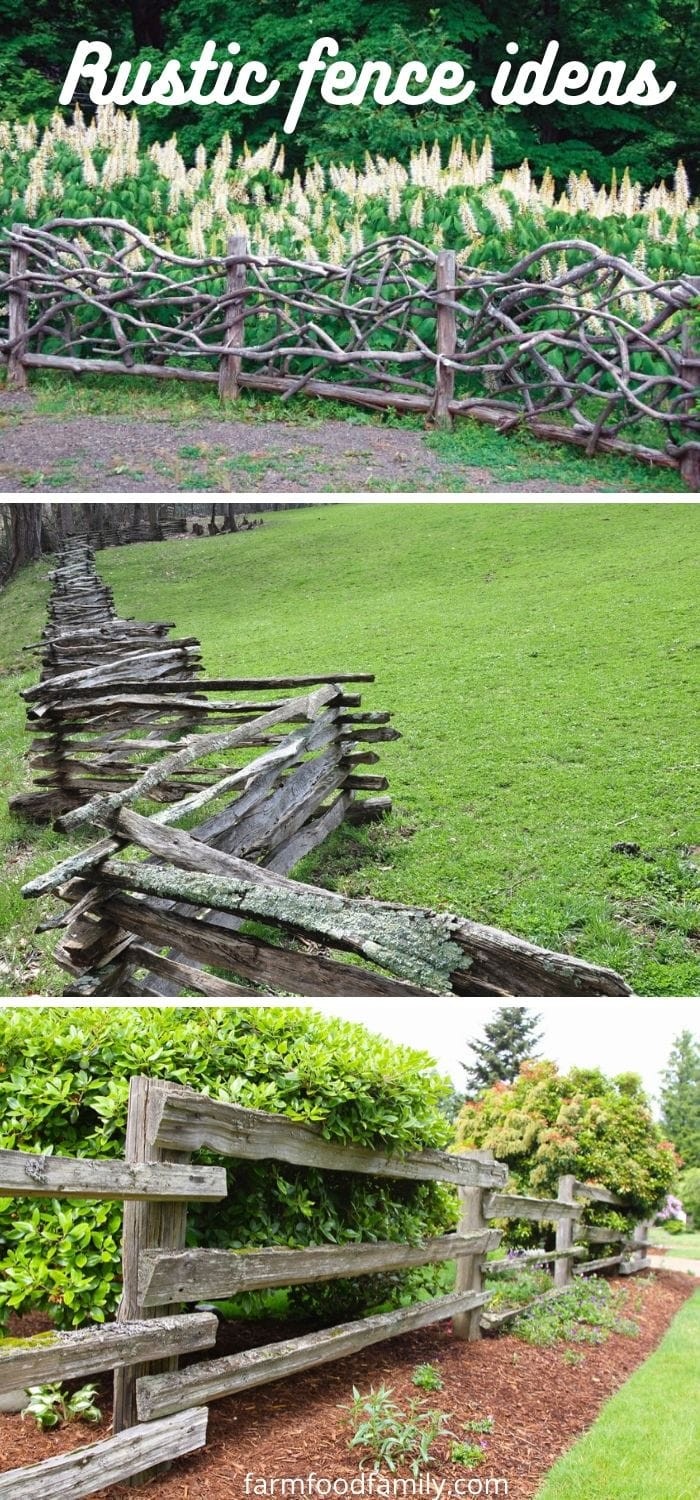
When you have accumulated scraps of wood, logs, or lumber that have been lingering for a while, it’s an excellent opportunity to repurpose them into rustic fence designs that can elevate the beauty of your outdoor spaces. Consider transforming these materials into unique features for your flower beds, backyard gateways, or even front yard vegetable gardens. Here are some creative ideas to infuse a rustic charm:
Wire fence ideas
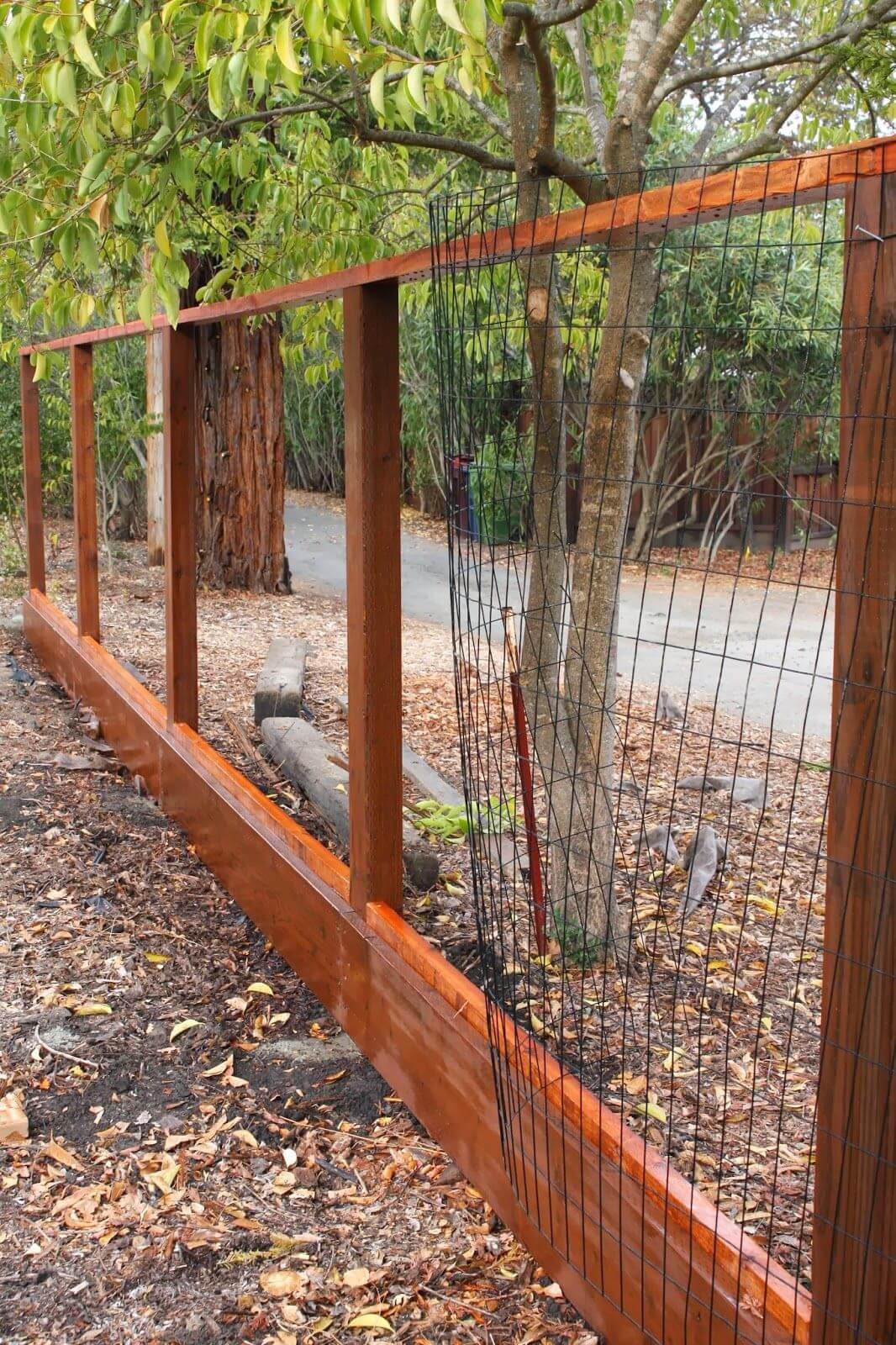
When it comes to pairing this type of fence idea, wood elements are the perfect match. These industrial-grade wire fences are durable and well-suited for a variety of applications, including backyard fencing, enclosures for vegetable gardens, and even dog runs. They’re ideal for creating secure boundaries that can withstand the test of time.
Chain link fence ideas

While hog links feature an interconnected web-like design, chain links exhibit a distinct crisscross pattern that makes them particularly well-suited for larger areas such as wide yards, dog fences, or expansive backyards. Take a moment to appreciate the unique aesthetic and functionality of these durable options.
Chicken wire fence ideas
While it may not offer the same level of durability as other materials, chicken wire fencing provides an affordable solution for securing your vegetable garden and keeping flowers in check. Among its many uses, this versatile material can also be used to create charming borders and enclosures. Here are some inspiring ideas for incorporating chicken wire into your outdoor space.
Above ground pool fence ideas
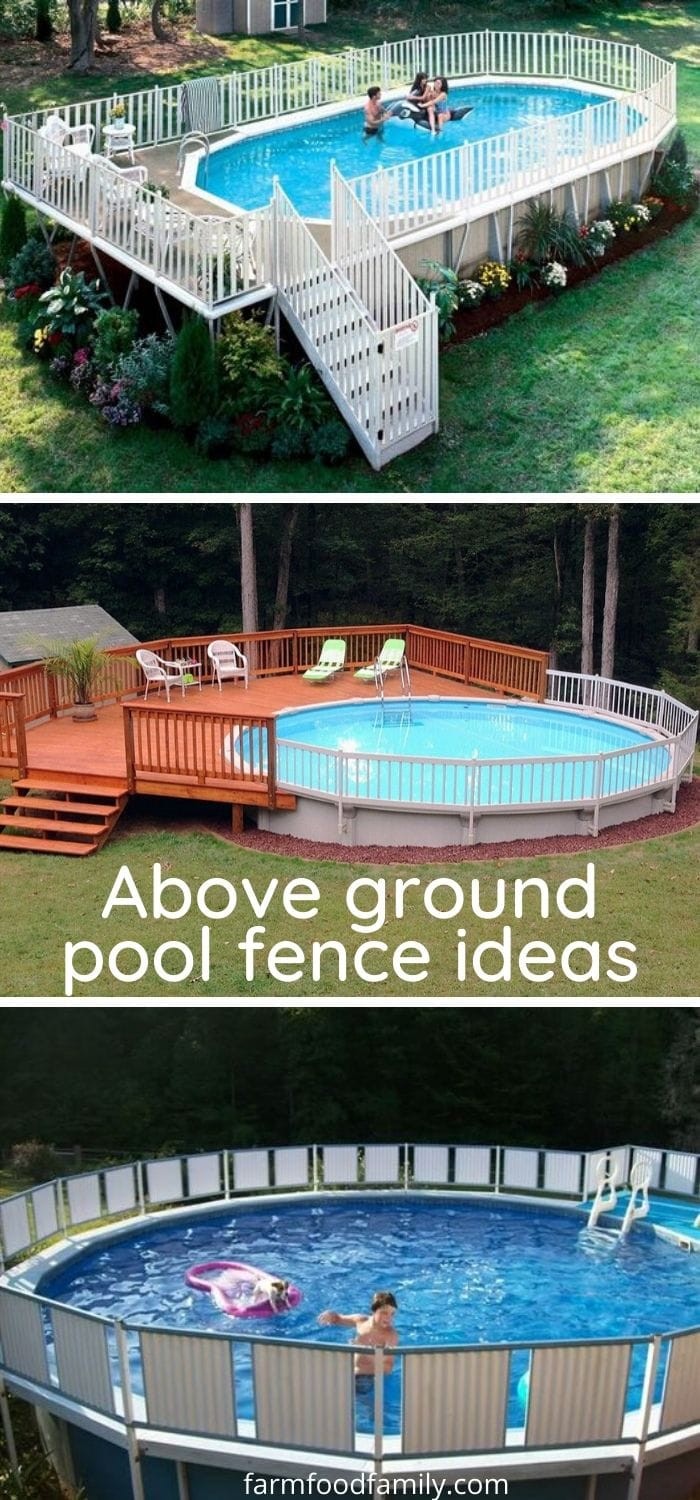
While above ground and in-ground pools can indeed be breathtakingly beautiful, their aesthetic appeal is further enhanced by the addition of thoughtfully designed fencing. The right perimeter treatment can elevate the overall visual impact, much like a work of art that is perfectly framed.
Vinyl fence ideas
Though pricey, these versatile features can be transformed into various styles, ranging from intricate latticework to charming picket fences. Not only do they exude sophistication, but they also offer endless design possibilities.
Split rail fence ideas
For a harmonious visual appeal, these fences can be grouped together to create a cohesive look that complements rustic design and wood-inspired elements. The addition of hog rails can add a layer of sophistication, while maintaining the classic simplicity of traditional split rail designs like those shown here.
Goat fence ideas
A standout category of fences are those that seamlessly integrate wood and wire or chain elements. What’s key here is striking a balance between durability and transparency. The perfect example can be seen in the designs offered by ProFence, Goods Home, and Pocket Farm, which successfully blend the two materials to create a visually appealing and functional barrier.
Brick fence ideas
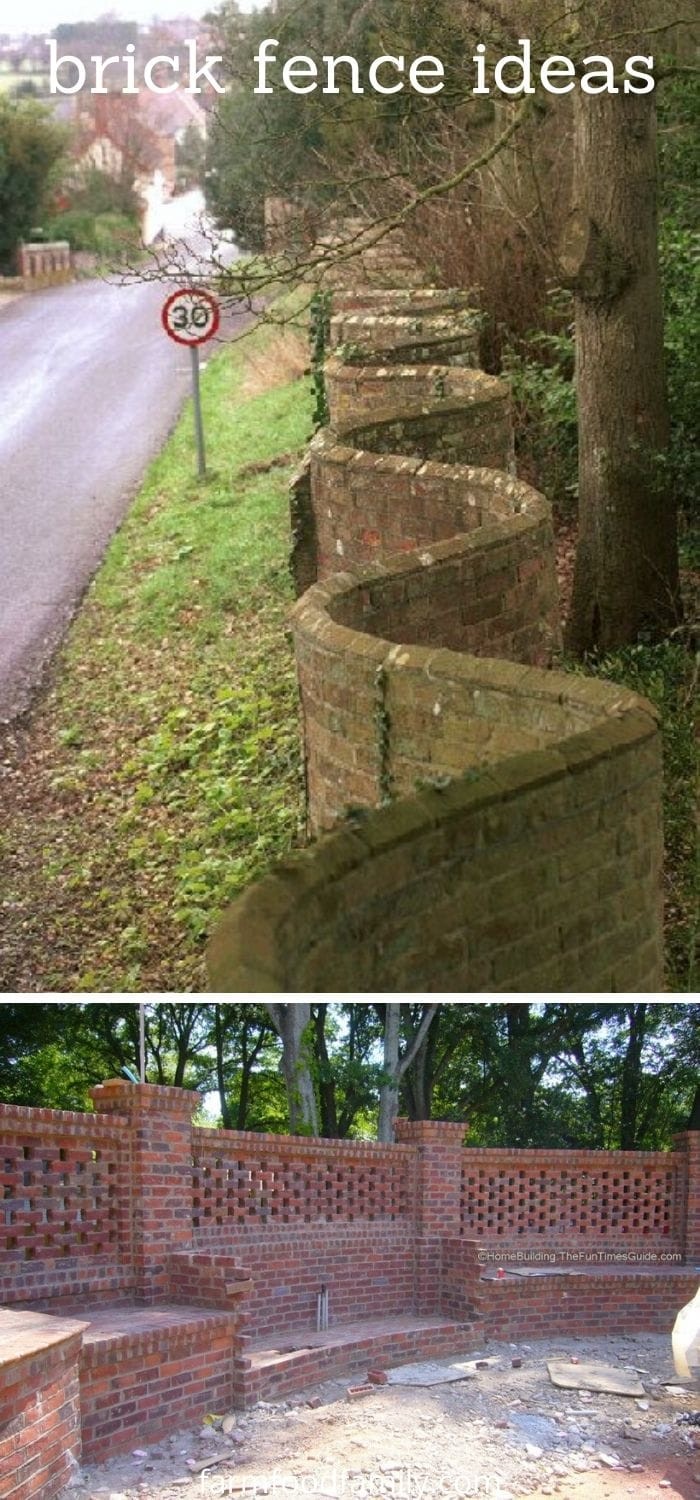
The versatility of brick fences is undeniable, transcending cultural and stylistic boundaries with ease. Whether evoking a sense of nostalgia for the Midwest or adding a touch of elegance to a classic or modern design, these structures have a timeless appeal. Moreover, their durability is unparalleled, ensuring that their aesthetic value will endure for generations to come.
Farm fencing
Typically, these types of fences are a combination of split rail, wood, and steel, with a focus on enclosures for vegetable gardens and farm animal habitats. Let’s take a look at some notable designs that have caught our attention.
Temporary fence ideas
These innovative fence concepts boast a key advantage – their modular design allows for effortless removal at any time, making them an economical choice. Moreover, they’re crafted from eco-friendly materials like reclaimed wood and PVC, echoing the principles of sustainability.
Driveway fence ideas
The allure of driveways flanked by captivating fences is nothing new. In recent times, contemporary architecture has elevated this trend to new heights, showcasing an array of breathtaking designs that never fail to impress.
Fence on slope ideas
Fences constructed from wood or steel can create a truly enchanting scene when installed on sloping surfaces. The unique design and visual appeal of these structures are reminiscent of whimsical landscapes, evoking feelings of wonder and curiosity.
Plant fence ideas
Incorporating organic fencing elements, such as lush greenery, can bring a sense of serenity and grounding to any outdoor space. The natural beauty of plants has a way of revitalizing the atmosphere, making it feel more down-to-earth and connected to nature.
Trellis fence ideas
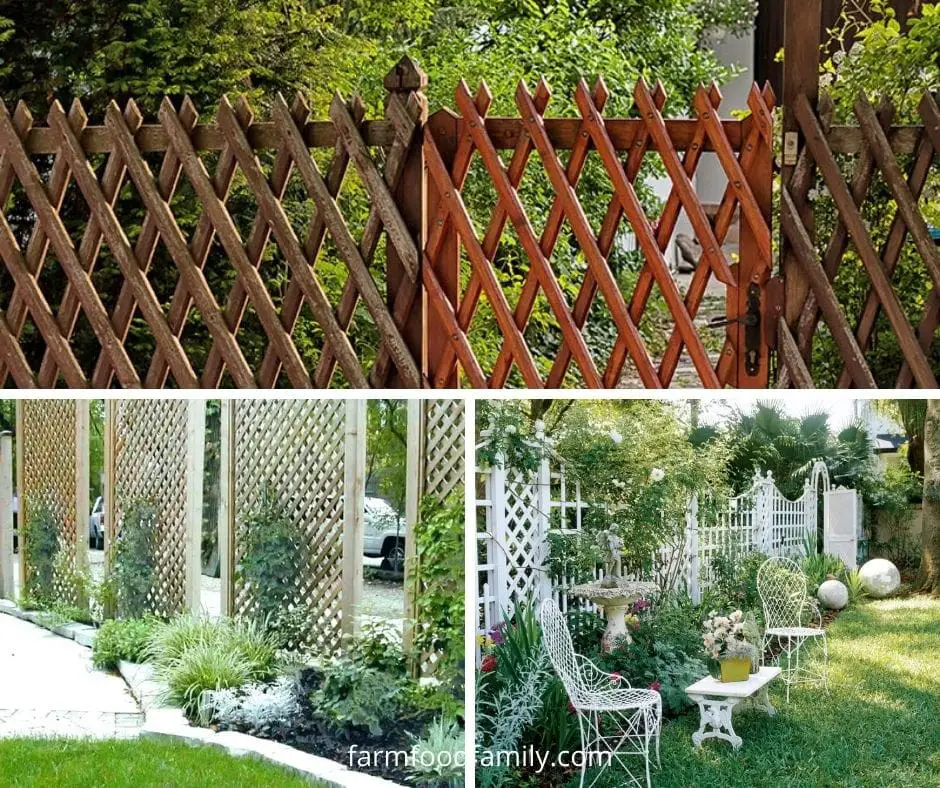
The incorporation of plants into fencing has become an increasingly popular design choice, and for good reason – it adds a touch of natural beauty to any outdoor space. One such approach is the use of trellis fences, which can be further enhanced by incorporating creative plant combinations, similar to these innovative ideas.
Fence post ideas
When it comes to designing a fence post, the possibilities are endless. On one hand, you can opt for customized solutions that cater specifically to your needs, while on the other hand, pre-made posts offer convenience and ease of installation. The key is finding the right approach for your unique situation. To get started, consider these ideas as a foundation for building your fence post design.
Porch fence ideas
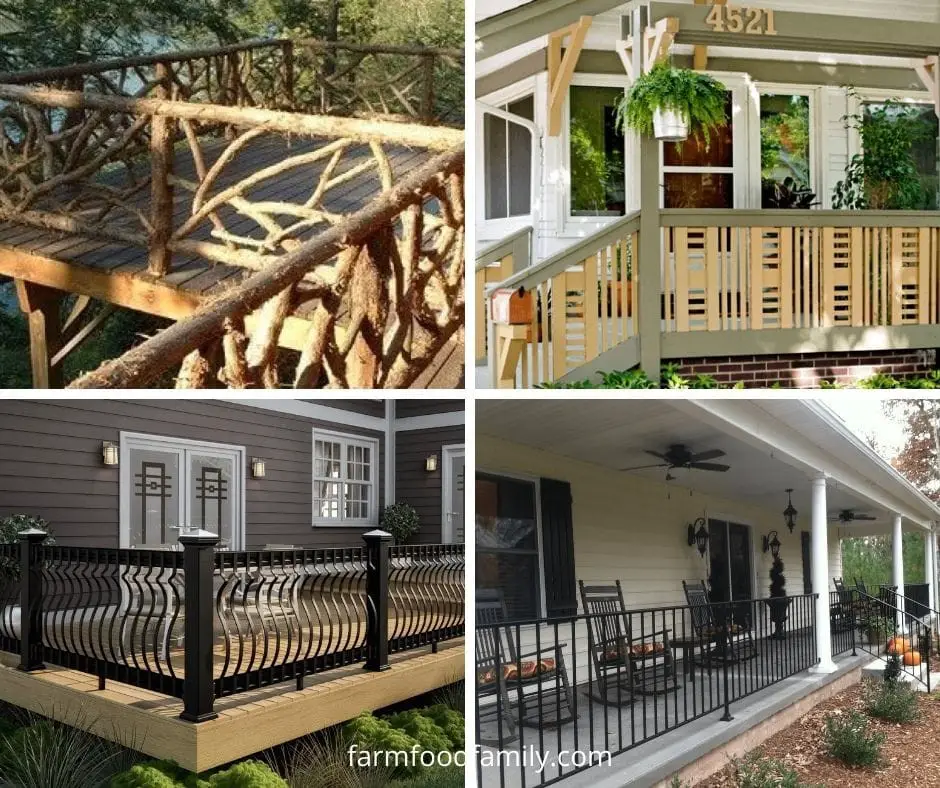
While suburban porches tend to thrive with low-maintenance, laid-back fencing, their urban counterparts often crave a sense of seclusion and security. However, regardless of the context, the type of fence surrounding your porch can significantly impact its ability to promote relaxation. For this reason, it’s essential to choose a fence that complements the ambiance you’re trying to create, whether that’s a peaceful retreat or a lively gathering spot.
Deer fence ideas
Are you looking to create a wildlife-friendly garden that’s impervious to larger critters like deer? Or perhaps you’re seeking inspiration for a smaller-scale enclosure that keeps pesky pests out? Either way, we’ve got some innovative deer fence ideas to get your creative juices flowing.
Invisible fence
At first glance, you might overlook them, tucked away as they are from a distance or under the glare of bright lights. These structures are actually clever combinations of natural materials like wood and grass, or sturdy industrial elements like thick steel – think of the rugged metal frameworks that support these structures.
Wrought iron fence ideas
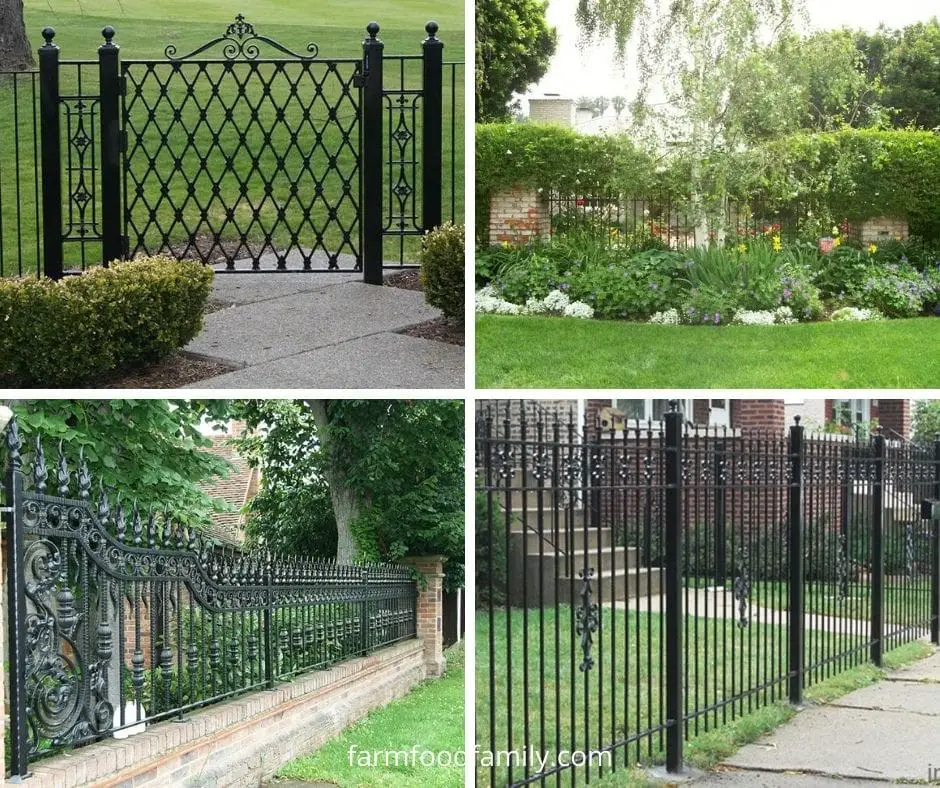
Wrought iron fences, often found in suburban settings, evoke the classic charm of urban New York neighborhoods and picturesque European countryside landscapes when installed along lanes. The timeless appeal of these metal barriers transports you to a bygone era, where elegance and sophistication reign supreme.
Hog wire fence ideas
Unlike chicken wire or chain links, these fencing options boast greater strength and durability. Their utility extends to providing a safe haven for canine companions and serving as an effective foundation for electric fencing systems.
No dig fence ideas
No-dig fencing has revolutionized the way we think about boundaries. For those who don’t enjoy manual labor or simply want to skip the backbreaking work of digging holes for posts, iron, metal, and PVC no-dig fences offer a convenient alternative. In this era of innovative solutions, there’s no shortage of creative ways to construct these fences, making them an attractive option for homeowners seeking a hassle-free approach.
Cedar fence picket

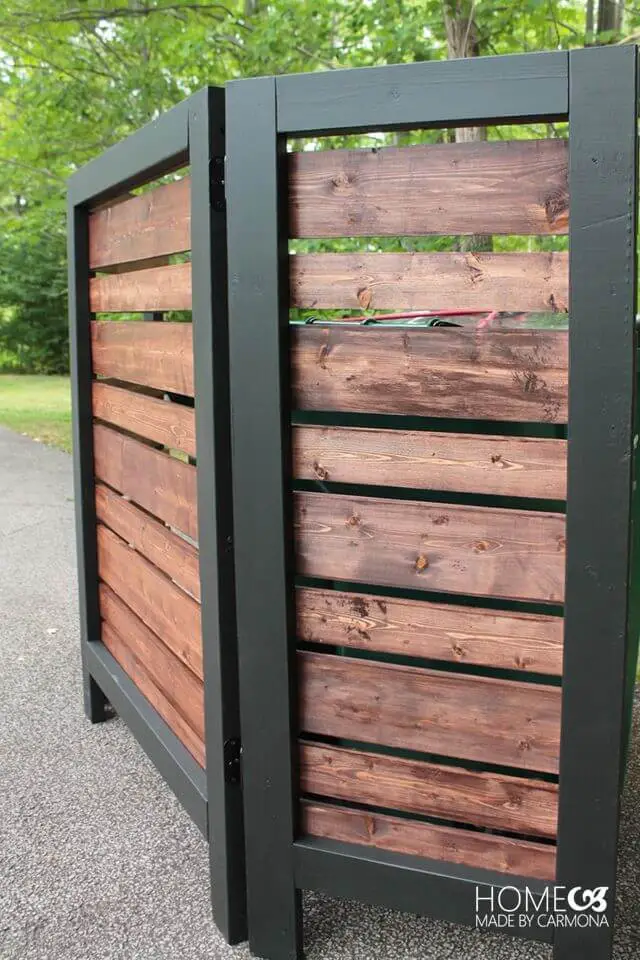

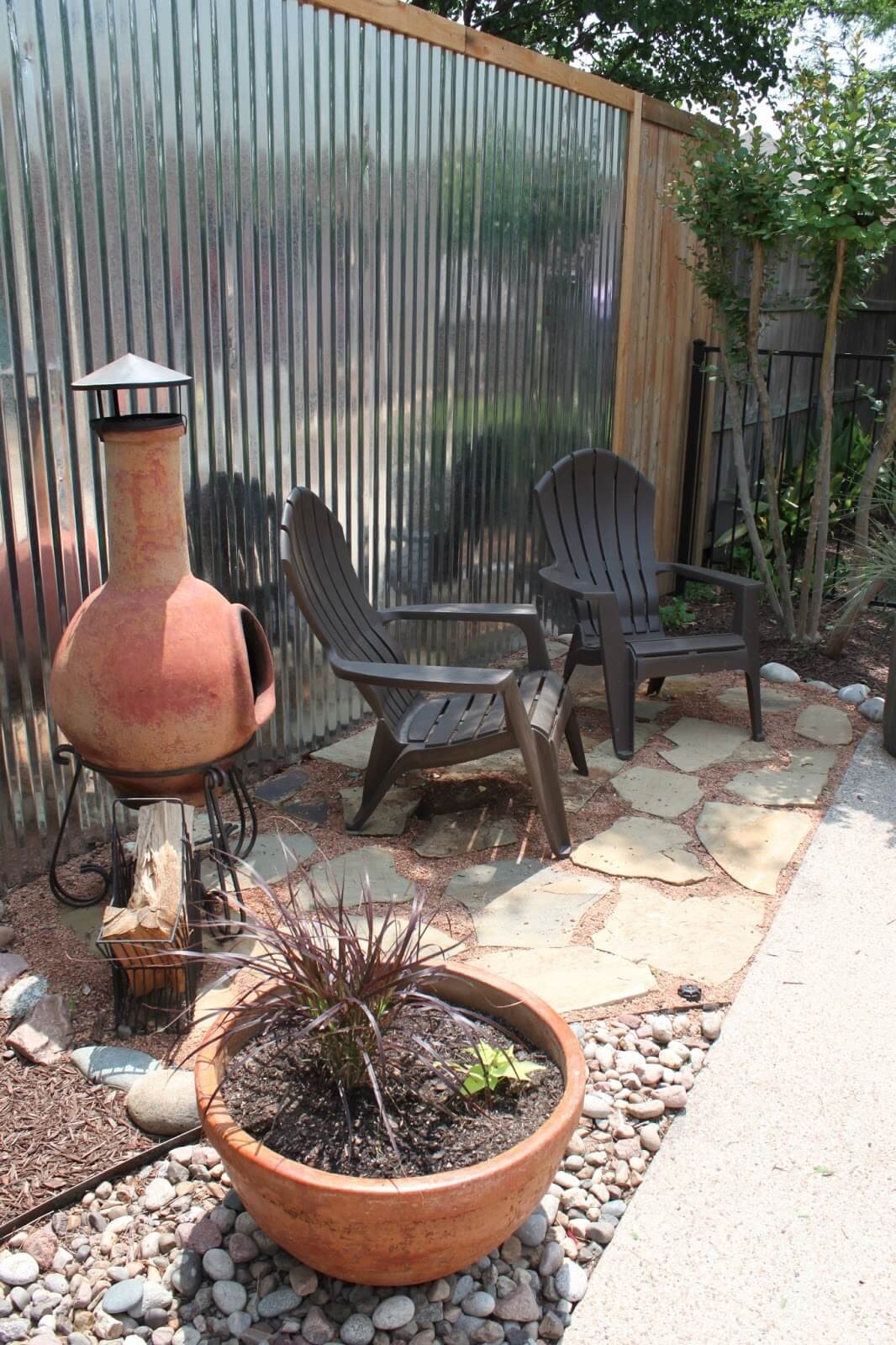
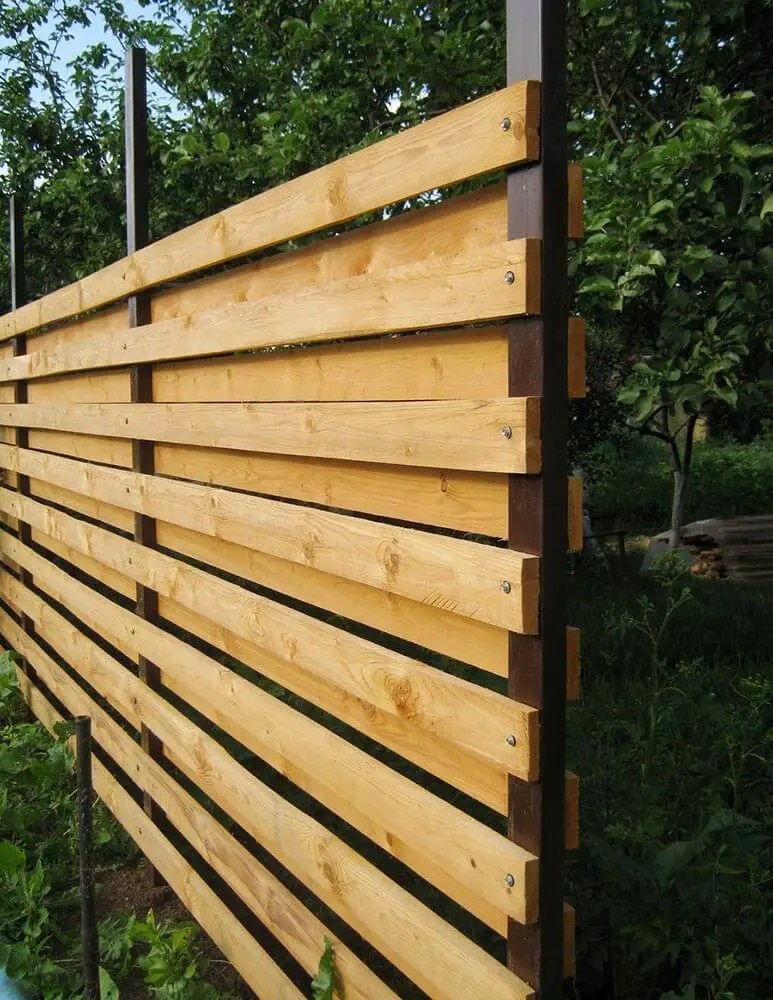
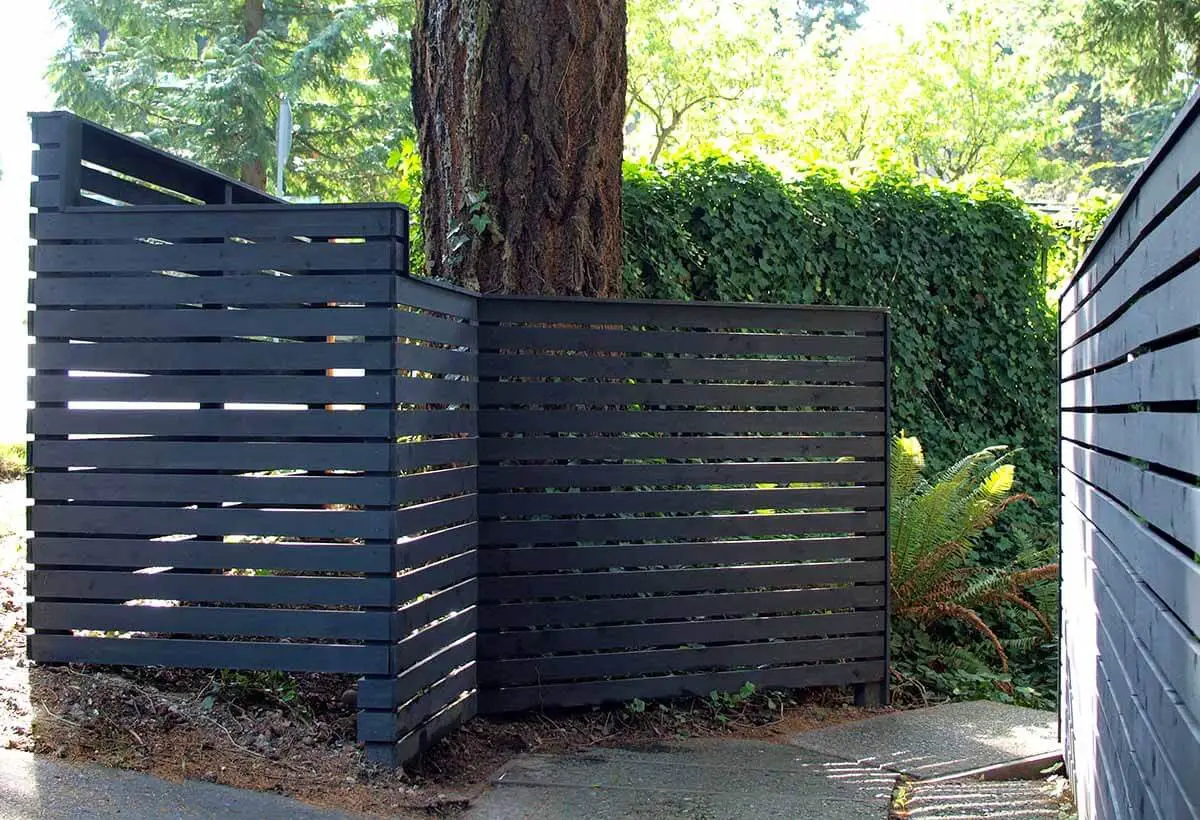

While picket fences are often associated with traditional and classic designs, they can also be used to create a more laid-back atmosphere when paired with elements like pallet or wood fences. This type of combination offers a unique blend of rustic charm and modern simplicity. For example, consider the use of natural materials like reclaimed wood and woven fibers to create a fence that’s both visually appealing and environmentally friendly.
Perfectly Straight Fence


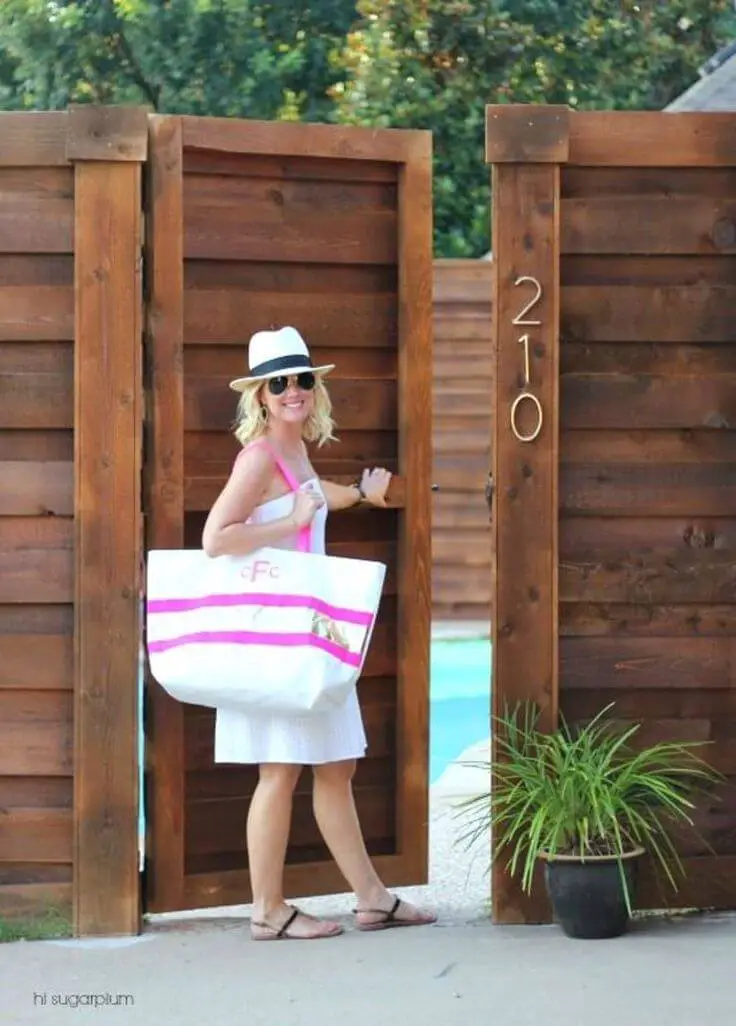
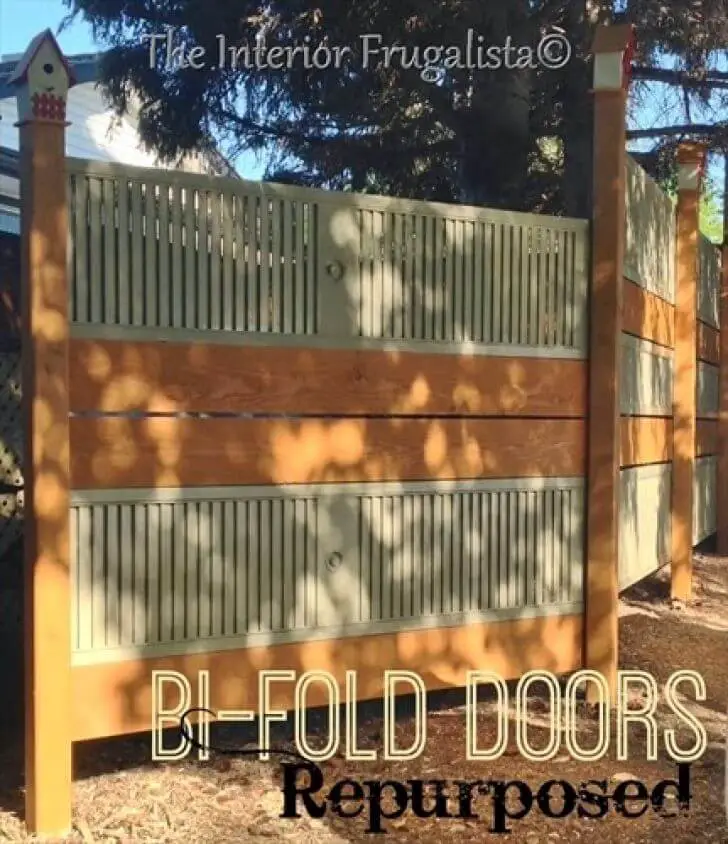
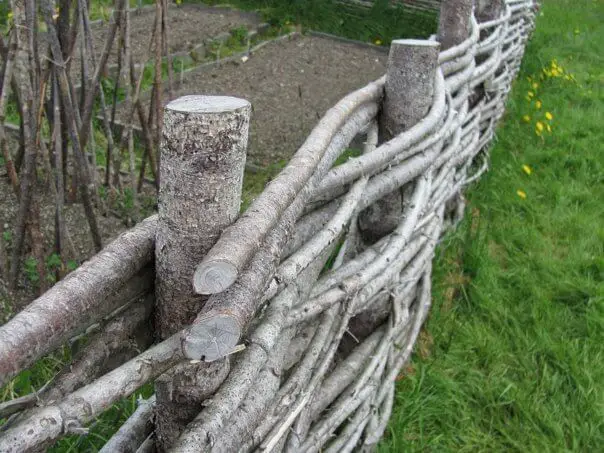
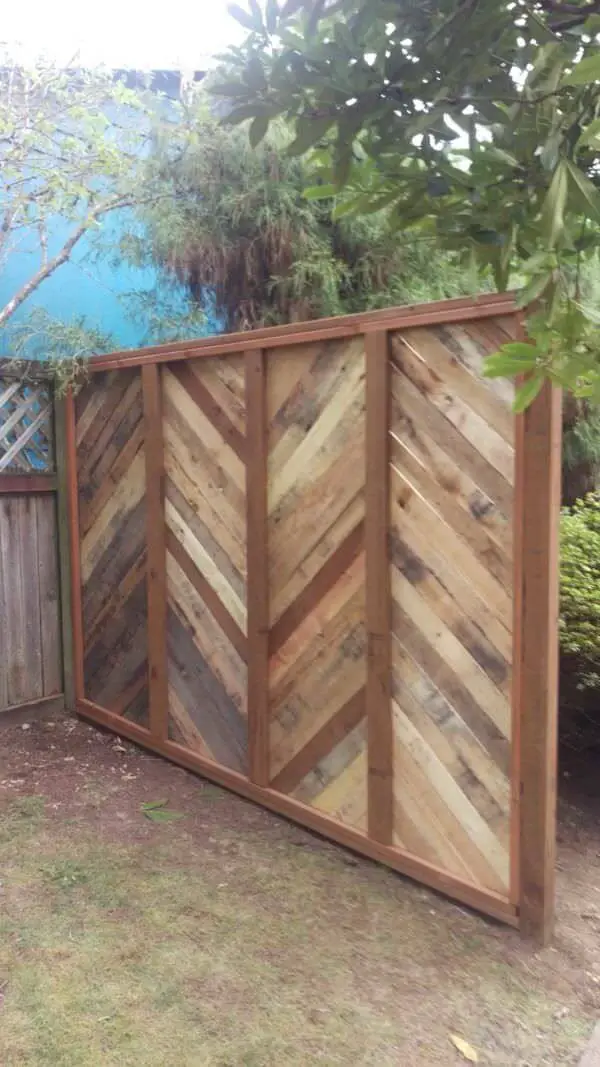

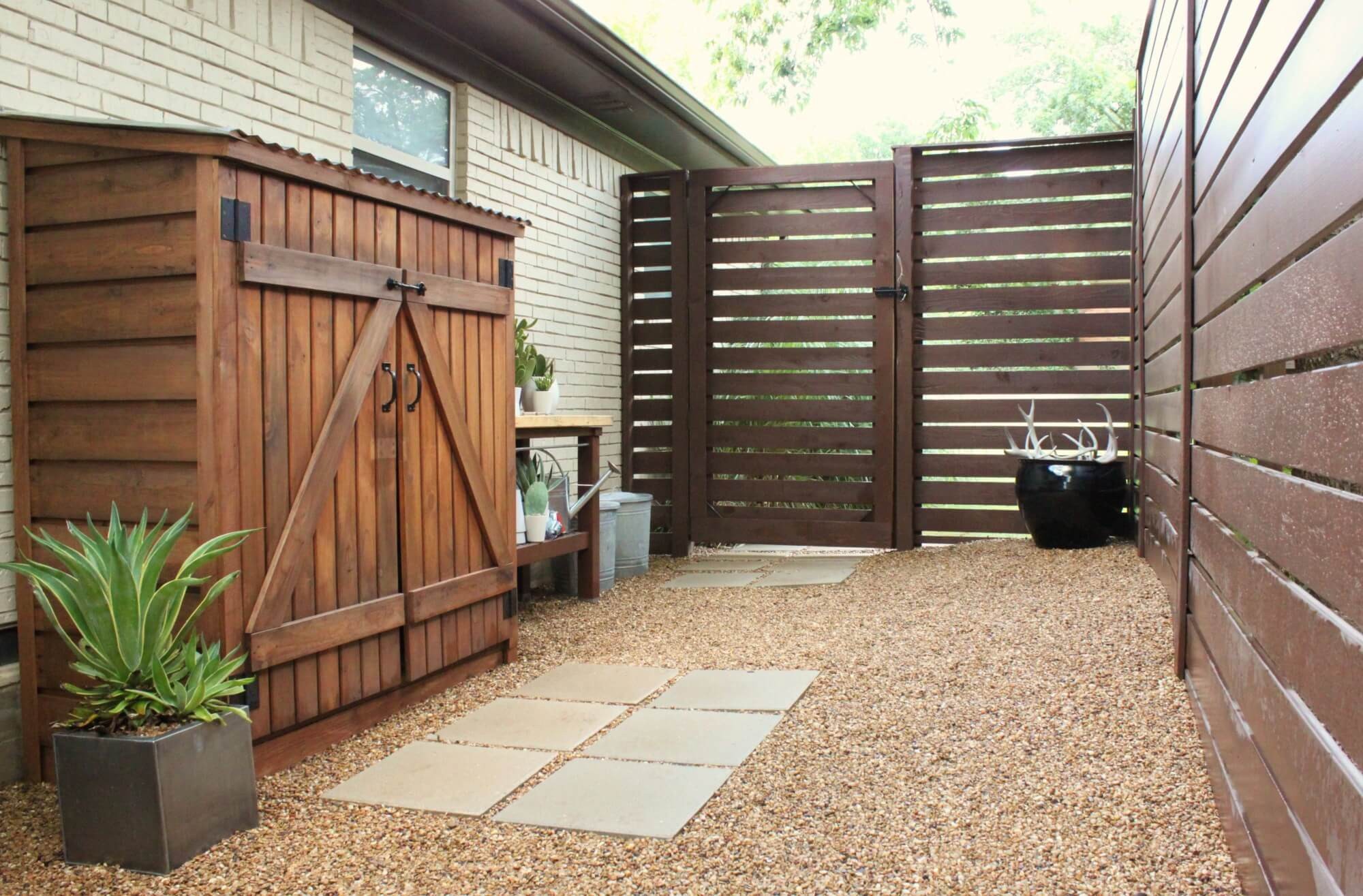

In today’s digital age, having an online presence is crucial for any individual or business. A well-curated list of inspiring and creative blogs can be a treasure trove of ideas and inspiration. With that in mind, let me share with you some of my favorite blogs that I find particularly charming due to their unique blend of creativity, design, and storytelling.
For those who appreciate the art of DIY projects, 1001 Pallets is a must-visit destination, offering an incredible array of upcycled creations. If you’re looking for a dash of sophistication and elegance, alidoesit’s WordPress blog is definitely worth exploring. Meanwhile, interiorfrugalista. com is perfect for those seeking affordable yet stylish home decor ideas. For the more artistic crowd, thecavenderdiary. com offers a wealth of inspiration and creative prompts.
Additionally, charmingimperfections. com provides a refreshing take on the world of crafting and DIY projects. Lastly, bloglovin. com is a great platform to discover new blogs and stay up-to-date with the latest trends in design and creativity. Hgtv. com is another fantastic resource for those seeking expert advice on interior design, while recyclart. org offers a unique perspective on art and sustainability. The Cavender Diary, too, is an excellent source of inspiration and creative ideas.
Make a Marble Fence

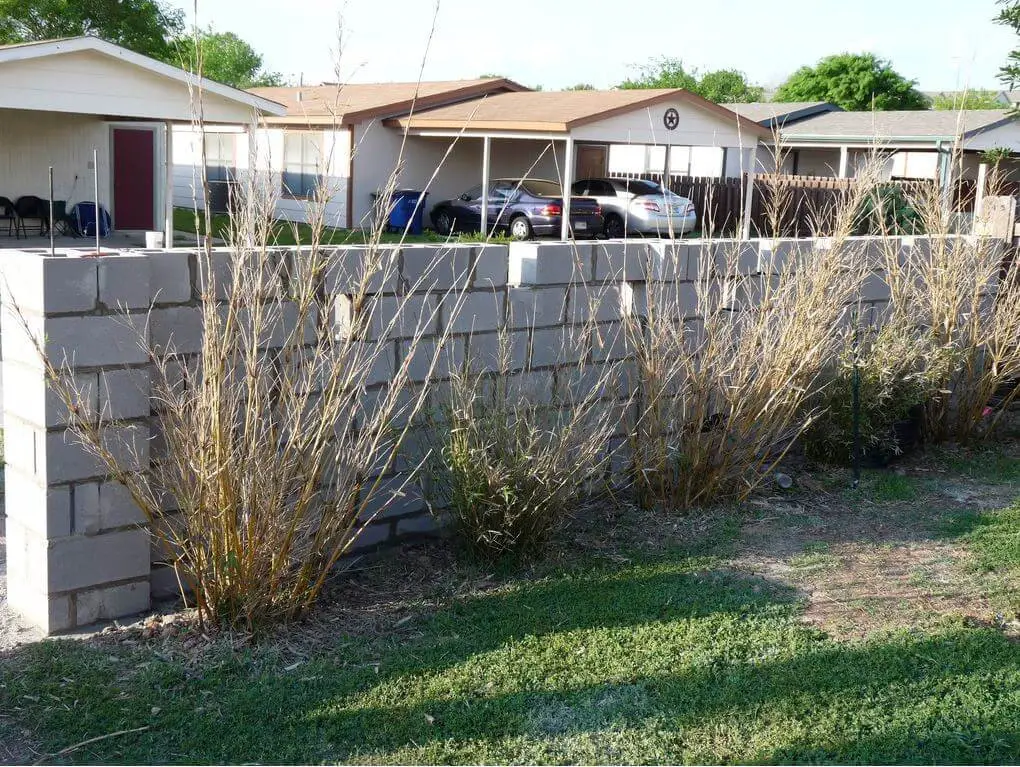
If you’re looking for inspiration to create really awesome and fun things, there are numerous online resources that can help. For instance, creatingreallyawesomefunthings. com is a great platform that showcases creative ideas and tutorials on various DIY projects, from home decor to crafting and upcycling. On the other hand, homebuilding. thefuntimesguide. com offers expert advice and guides on building and renovating homes, covering topics such as architecture, interior design, and construction.
Lastly, remodelaholic. com is a fantastic platform that features inspiring before-and-after transformations of various rooms, along with helpful tips and tricks for homeowners looking to give their spaces a fresh new look.
Fence from upcycled bike wheels

Wattle Fencing
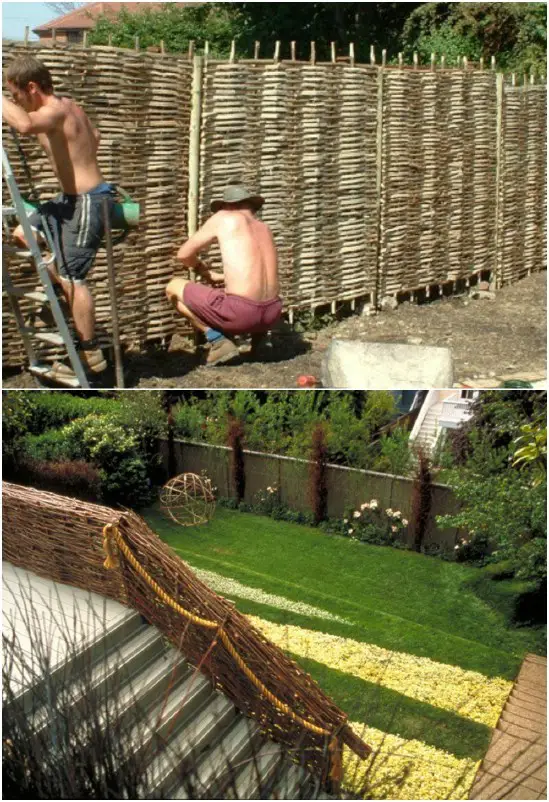
Rustic Twig Fence
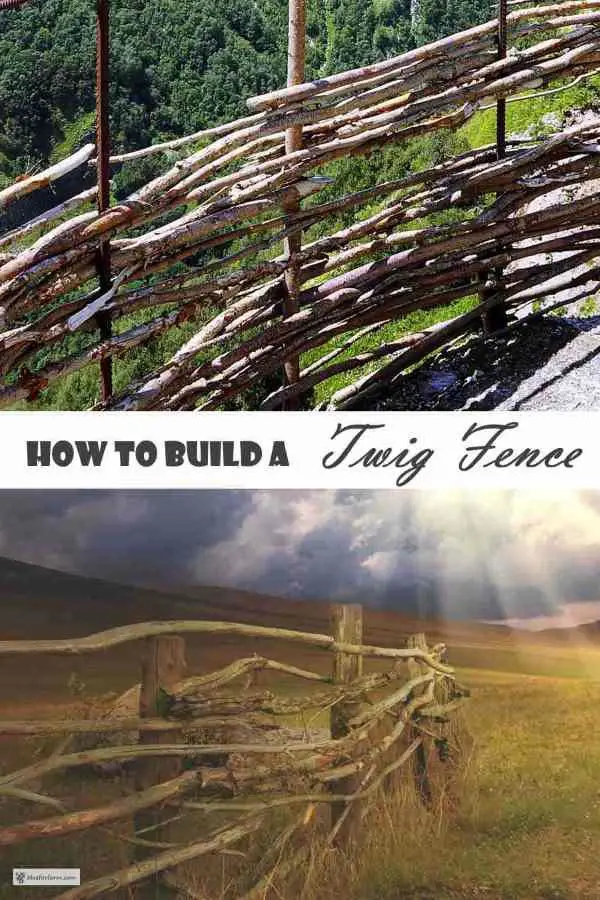
Stone Fence Ideas
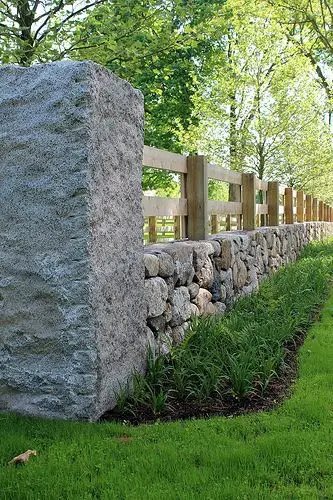
The cost of fencing can quickly add up, even for a simple perimeter fence. However, using stone as a natural boundary can create a stunning and elegant feature that’s hard to replicate with other materials. In fact, many homes from the late 1800s and early 1900s relied on stone fencing, constructing walls between three to four feet high that became known as stone fences. These rustic barriers are still a common sight in rural communities today, lending an air of old-world charm to properties.
And the best part? With some elbow grease, you can build your own stone fence without breaking the bank.
Collecting the Stones
When it comes to collecting stones for a stone fence, a crucial consideration is their portability. To ensure ease of movement, select stones that are no larger than 12-14 inches in diameter. Aim for consistency in color and shape as well. Mixing disparate shapes, such as combining round with flat stones, can result in an unattractive construction. Instead, strive to use stones that share similar characteristics to create a cohesive and visually appealing stone fence.
Where to Collect the Stones
In many rural areas surrounding major cities worldwide, farm fields are a common sight. Each year, farmers meticulously cultivate their land, laboriously removing rocks that have made their way up through the soil. As these stones accumulate, they’re often stockpiled in various sections of the farm, and many farmers are more than happy to give them away to individuals willing to take on the task of hauling them away.
With a trailer and some sturdy gloves, you can start collecting rocks for your very own stone fence.
Constructing the Fence
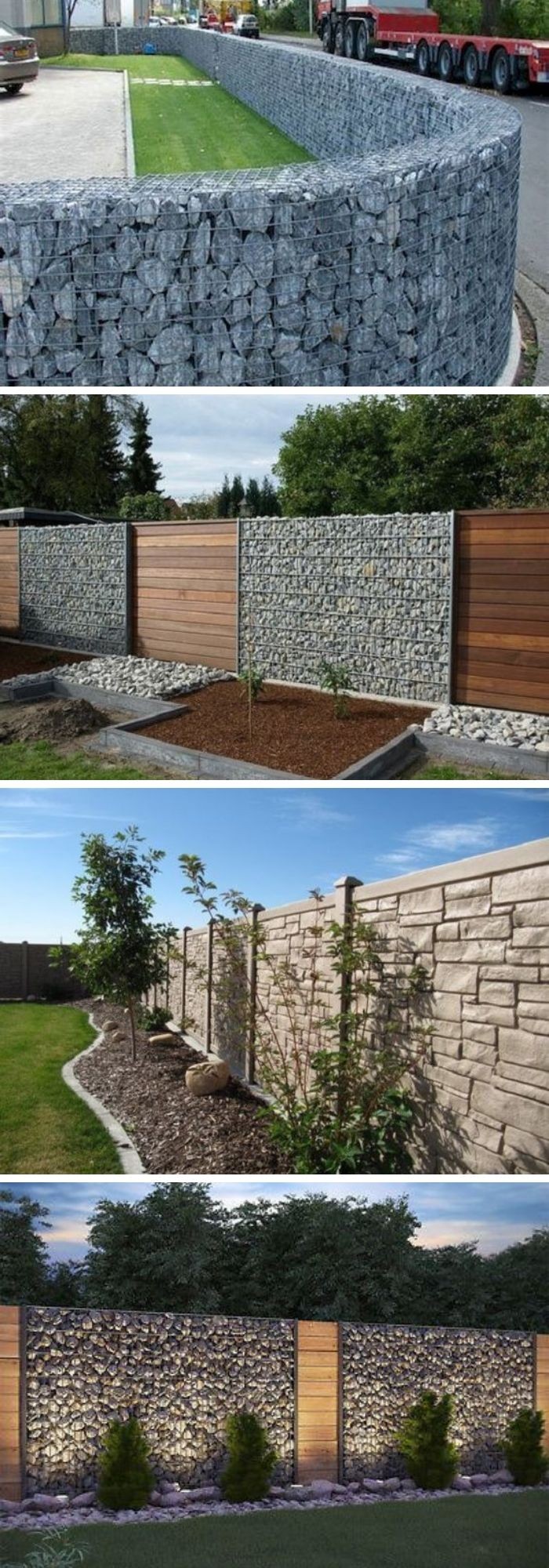
To construct your dry stone wall, begin by laying foundation stones parallel to each other on the ground. As there’s no mortar involved, the stones need to fit together seamlessly, requiring a process of trial and error to achieve the perfect alignment. Aim for sections that are approximately 18-24 inches thick, allowing each side of the fence to lean against it sturdily.
To ensure stability and facilitate the stacking process, introduce a gentle pitch from base to apex.
This subtle angle enables the stones to reinforce one another as they’re placed into position. While the initial stages may require more time and effort, your building skills will soon improve, accelerating the overall construction pace.
Considerations
When building a stone fence in the city, it’s essential to adhere to local regulations regarding fencing structures. Since these fences are often permanent, it’s crucial to get it right from the start. For families with young children, an added precaution is to secure the top row of stones to the underlying layer using PL 400 construction adhesive. This ensures that if little ones climb on the fence, the stones won’t dislodge and cause any harm.
Stone fencing can add a touch of timeless elegance to your home’s exterior without breaking the bank. Take pride in your DIY achievement and be prepared for curious neighbors or acquaintances asking about your unique feature. Just don’t be surprised if they ask you to lend a hand with their own stone fence project, eager to replicate your success.
How to build a fence
When considering constructing your own fence, it’s essential to be aware of the process involved. To begin with, you’ll want to decide on the type of material you intend to use and gather any necessary tools. Additionally, measuring out your entire property is crucial in ensuring a precise fit. Once these preliminary steps are complete, there are five key stages to building a successful fence.
#1. Marking post holes
To establish a solid foundation for your fence installation, begin by strategically positioning the first posts. Start by analyzing the terrain of your property, taking note of any slopes or flat areas. Next, measure out the spacing between the posts at approximately six to eight feet apart. This will ensure a consistent and visually appealing structure. To maintain symmetry and precision, utilize a construction nylon as a guideline for marking post holes.
This versatile material will serve as a reference point, allowing you to create evenly spaced and accurately aligned fence posts.
#2. Prepare the holes and posts
Once the location markers are complete, it’s time to start excavating the hole sites. A crucial step is ensuring that one-third of each post remains buried beneath the surface. Before commencing this process, however, it’s essential to apply a wood preservative treatment to each post to prevent rot and decay over time. This critical step must be repeated for all marked locations to guarantee the structural integrity and longevity of your posts.
#3. Setting the posts in place
To begin installing your fence posts, start by filling any holes or gaps with two scoops of soil. This will provide a solid foundation for the posts. Next, carefully position each post in its designated hole, ensuring they’re evenly spaced and aligned. Use a levelling tool to double-check their positioning, making any necessary adjustments to achieve perfect harmony. Once all posts are in place and aligned, secure them with stakes or other bracing methods to prevent shifting during filling.
Finally, fill the holes with additional soil and gently tamp it down, taking care not to disrupt the carefully maintained alignment.
#4. Attaching the rails
To complete the fencing process, you’ll need to attach the top and bottom rails to the fence posts. Ensure that each post is securely attached to both the top and bottom rails, creating a sturdy structure. Before moving forward, double-check that all posts are properly aligned along the rails, then secure them in place with your chosen method.
#5. Fence boards
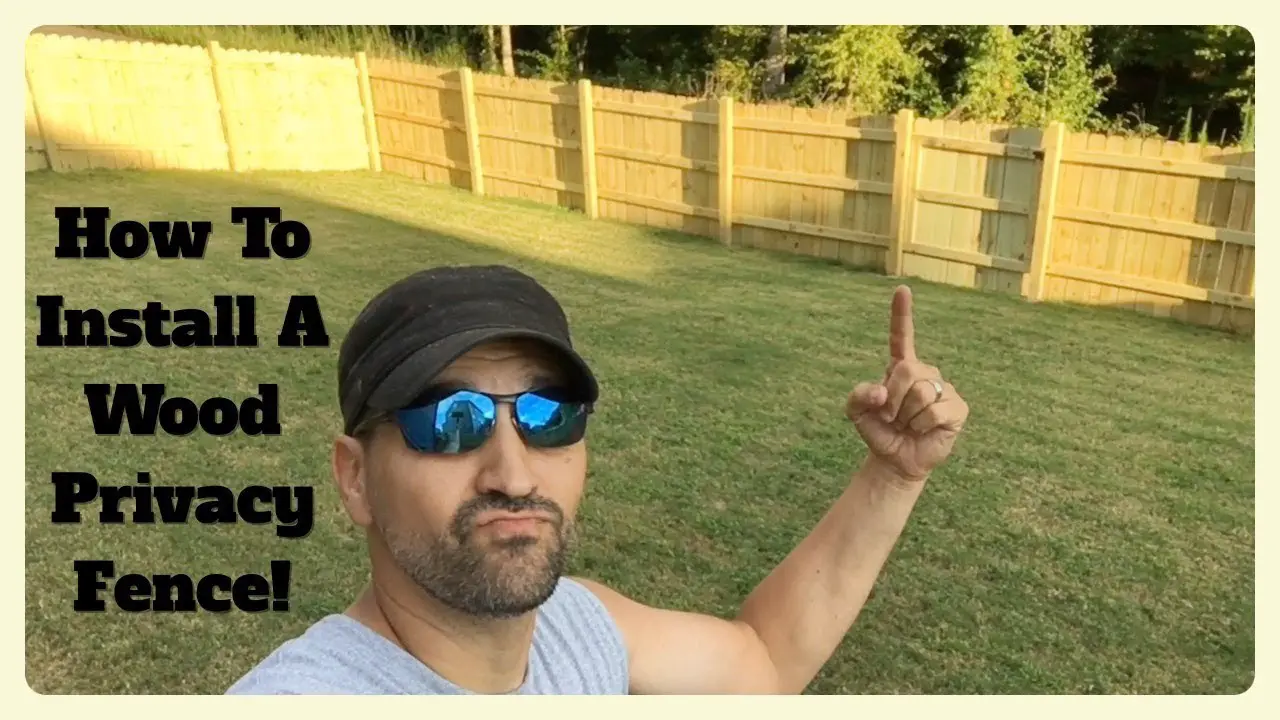
Now that the posts are in place and the rails are securely attached, it’s time to install the final component: the fence boards. If you’re working with wooden boards, be sure to regularly check their levelling and alignment to ensure a smooth installation process – re-levelling may be necessary if mistakes are made. In contrast, metal or wrought-iron fences typically don’t require this level of attention.
For added visual guidance and expert tips on building a fence, consider consulting the following helpful videos from Kalind’s Life, Lowes Home Improvement, and The Home Depot. Moving forward, read on to discover more tailored fence ideas suited to your specific needs.
Conclusion
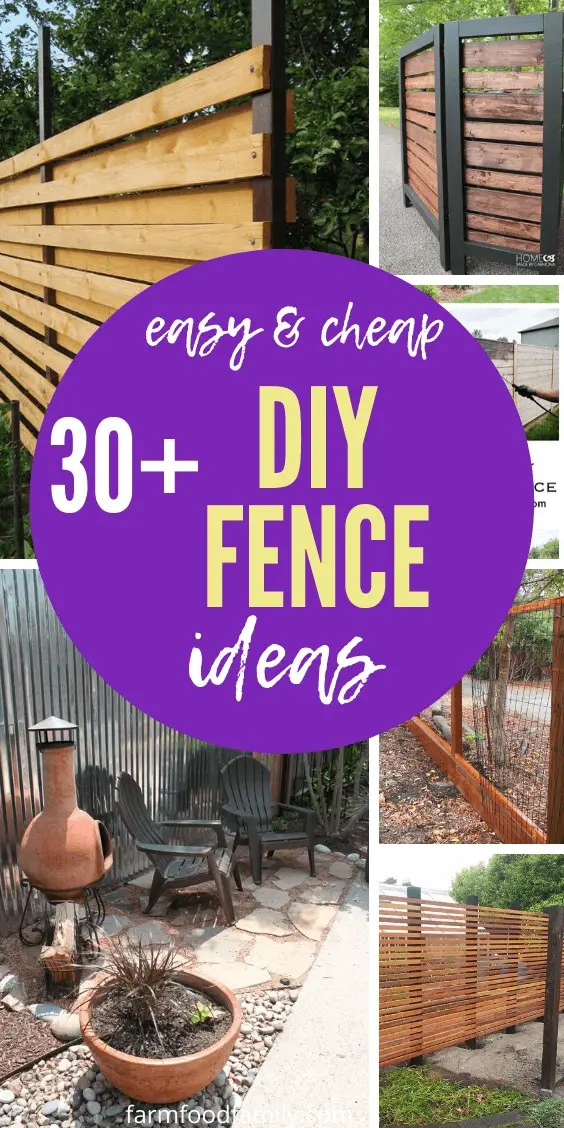
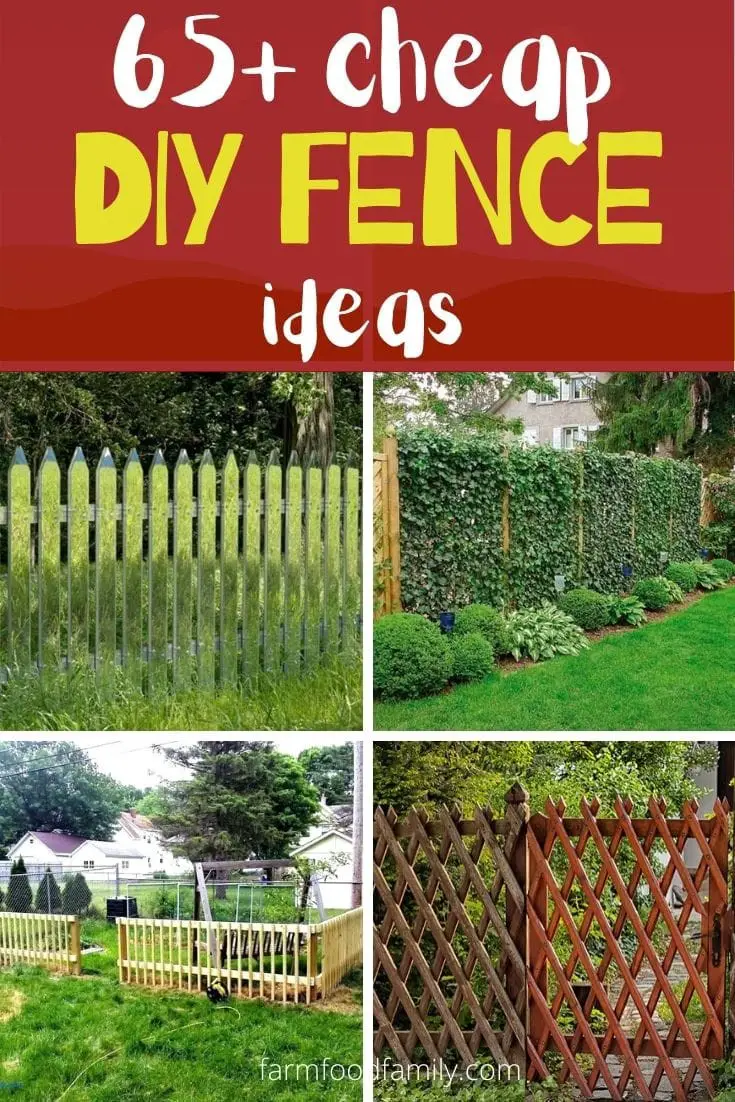
When it comes to choosing the perfect fence for your home, it’s essential to consider several factors. Firstly, think about how the fence will complement your home’s architecture – a sleek modern design may clash with traditional styling, while a rustic wooden fence might suit a cozy cottage perfectly.
Next, if you’re planning to install the fence yourself, make sure you’re prepared for the task at hand, whether that means gathering materials, recruiting help, or simply mentally preparing yourself for the physical demands of the job. Finally, consider the convenience factor – are you short on time and budget? A premade or no-dig design might be just what you need to simplify the process.
Once you’ve weighed these factors carefully, you’ll be well on your way to completing a successful fencing project, and we hope that our suggestions have provided some valuable inspiration along the way.


